The county of Argyll is split up into north and south and covers 23 islands, as well as some of the Scottish mainland. Argyll is known as Scotland’s adventure coast, boasting activities such as the Argyll Sea Kayak Trail, the Cowal Way Walking Trail, and countless opportunities to see local wildlife such as eagles, deer, otters, and seals.
Not only are there views and landscapes that are guaranteed to take your breath away, but Argyll also has a rich and fascinating history – which you can learn about through its castles. In this post, we’ll take a look at some of the most interesting castles in Argyll.
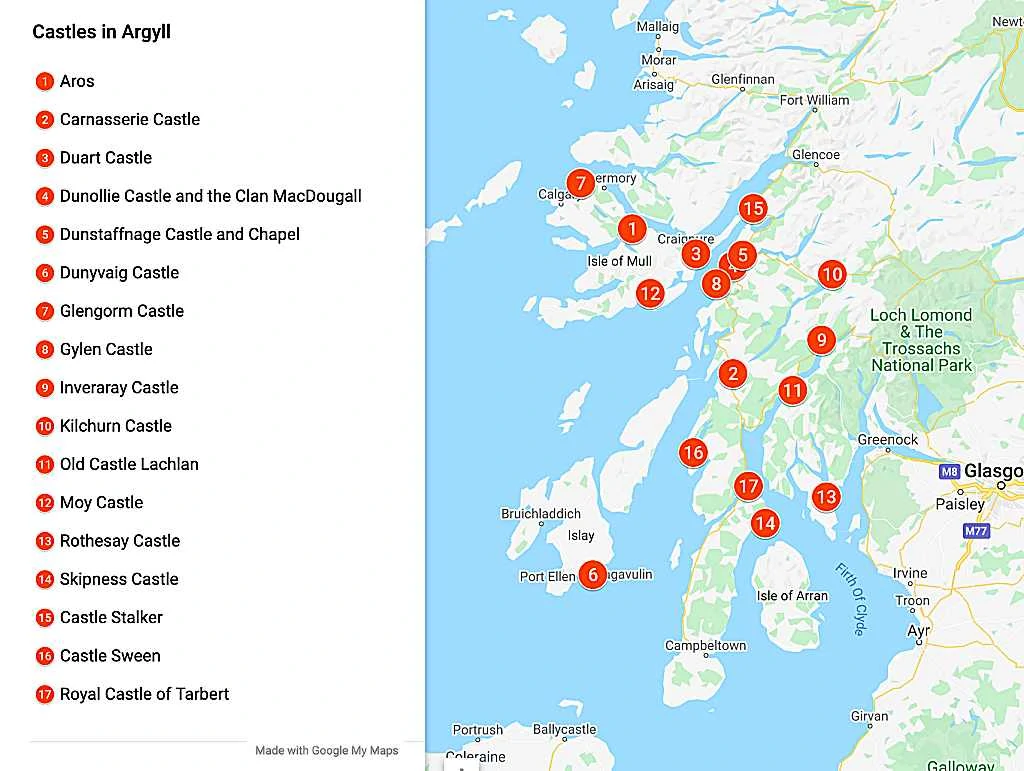
17 Castles to Visit in Argyll
1. Aros Castle

The ruin of Aros Castle was once a major stronghold for the lairds of the isles. However, that was back in the 13th and 14th centuries. Now, there’s just a shadow of a castle on a low sea cliff. Its strong defensive position is easy to see, with a steep drop to the beach and a ditch and a wall on the side facing land.
It is possible to visit Aros Castle, but you will have to navigate an overgrown courtyard and falling masonry. Locals advise that if you visit, you are doing so at your own risk.
Where: Salen, Isle of Mull
When: 13th century
Open for Visit: Yes, it is possible to enter the castle.
2. Carnasserie Castle
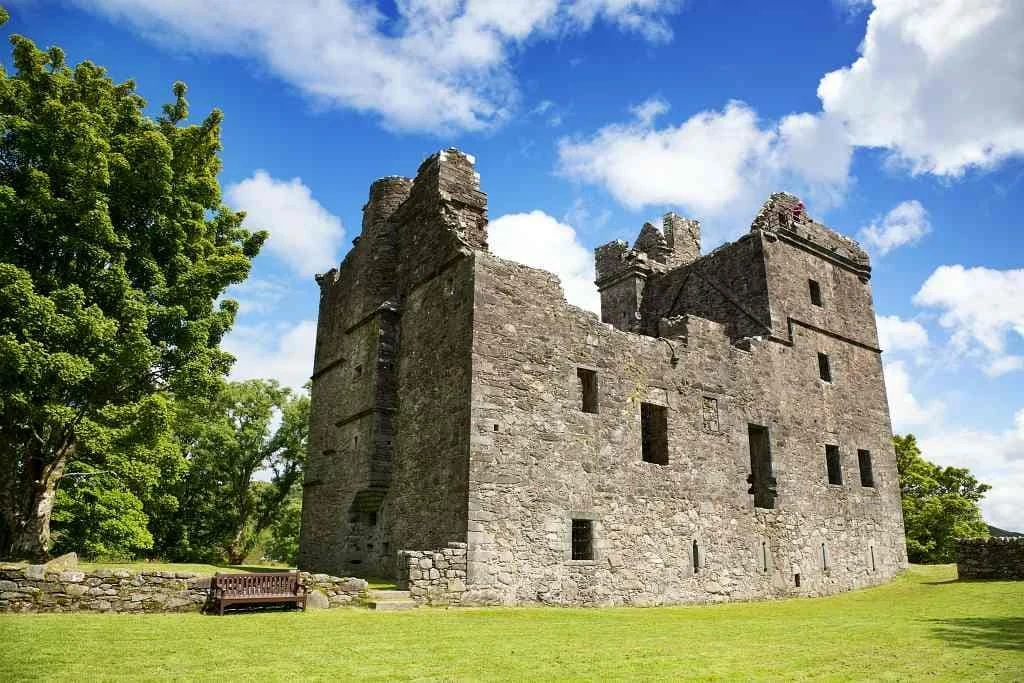
Once, Carnasserie Castle was one of the finest examples of Renaissance architecture in Scotland, but over the years, it gradually fell into disrepair. It was the home of the first Protestant Bishop of the Isles.
Despite its ruined state, it is still possible to see some of the hand-carved features on the castle’s design and go up to the roof to get spectacular views of Kilmartin Glen. Some of the glen’s standing stones and other geographical features are visible from the top of Carnasserie Castle.
Where: Lochgilphead
When: 16th century
Style: RenaissanceTower House
Open for Visit: Yes, check here for more information.
3. Duart Castle
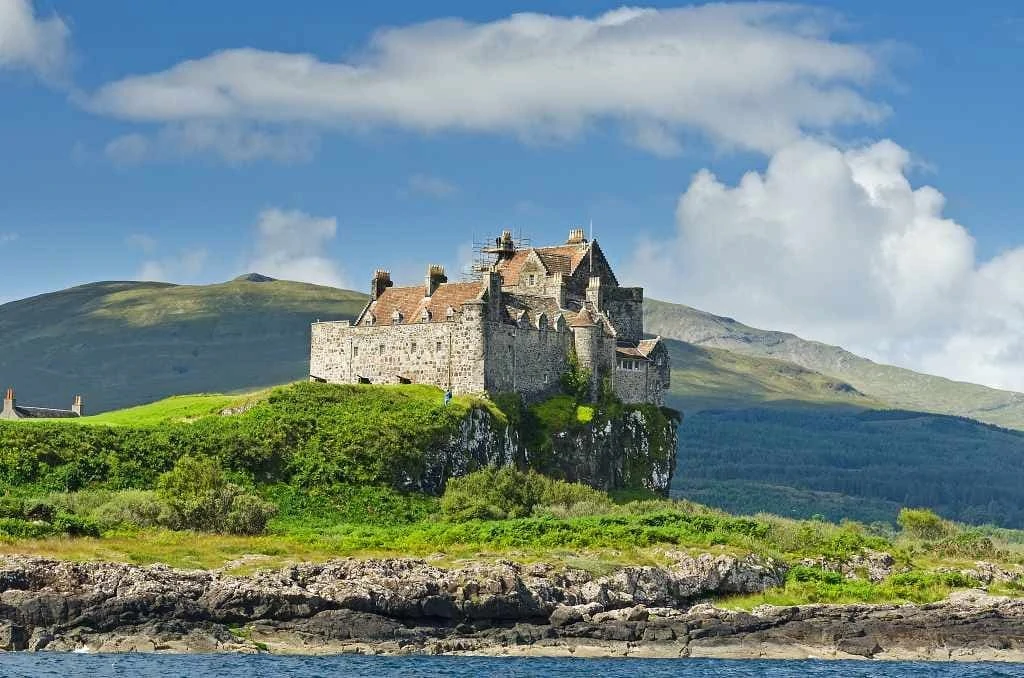
Overlooking the Sound of Mull and Loch Linnhe, Duart Castle was the seat of the Maclean Clan for more than four centuries. The castle’s defensive walls are thicker on the vulnerable land side than those looking out to sea.
Although the castle dates back to the 13th century, not all of what you can see is that old. It fell into ruin in the 18th century before being restored by Sir Fitzroy Maclean in 1911. Now, you can visit the dungeons and magnificent interiors as well as enjoying the views. The castle is also a popular wedding venue.
Where: Isle of Mull
When: 13th century
Style: Medieval
Open for Visit: Yes. For more information, check here.
4. Dunollie Castle
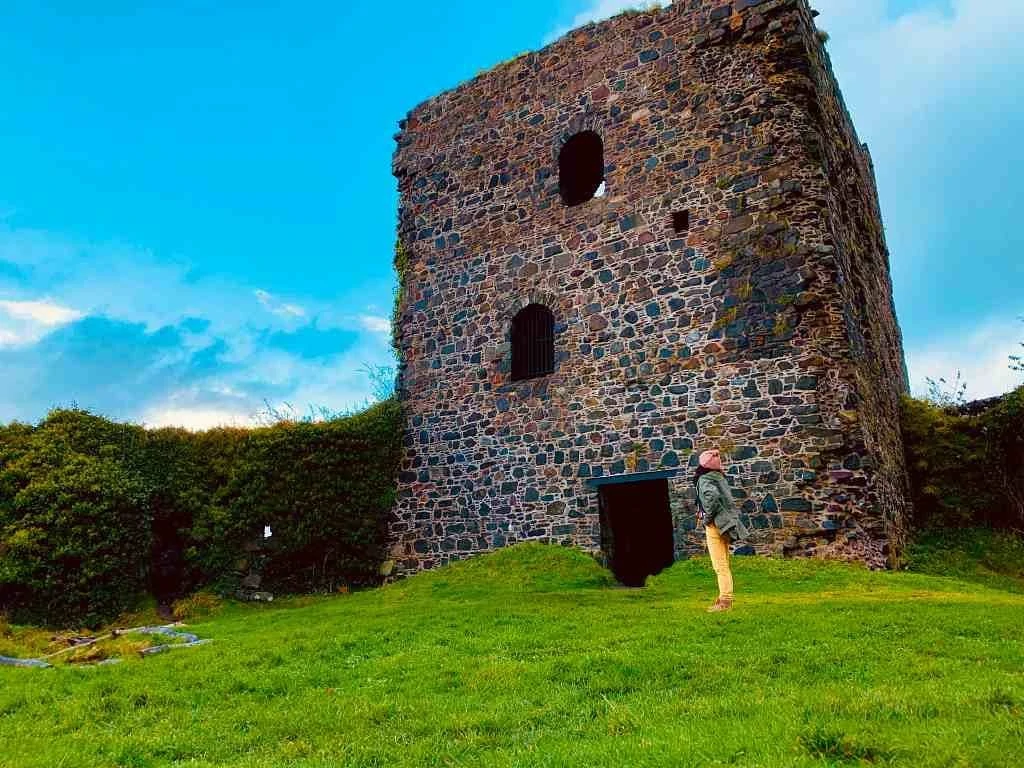
Dunollie Castle is a small ruin atop a rocky crag north of Oban. It overlooks the island of Kerrera, as well as boasting views of Oban, the harbour, and outlying islands. Although the current structure is thought to date back to the 12th or 13th century, evidence shows that there was a fortification even earlier – said to be burned down at the end of the 7th century AD.
The Castle is the ancestral home of the Clan MacDougall, and you can visit to learn more about the family. The castle is part of a larger complex that includes a faerie garden, woodland trail, and weaving cottage, among others.
Where: Oban
When: 12th and 13th century
Style: Medieval
Open for Visit: Yes. For more information, check here.
5. Dunstaffnage Castle
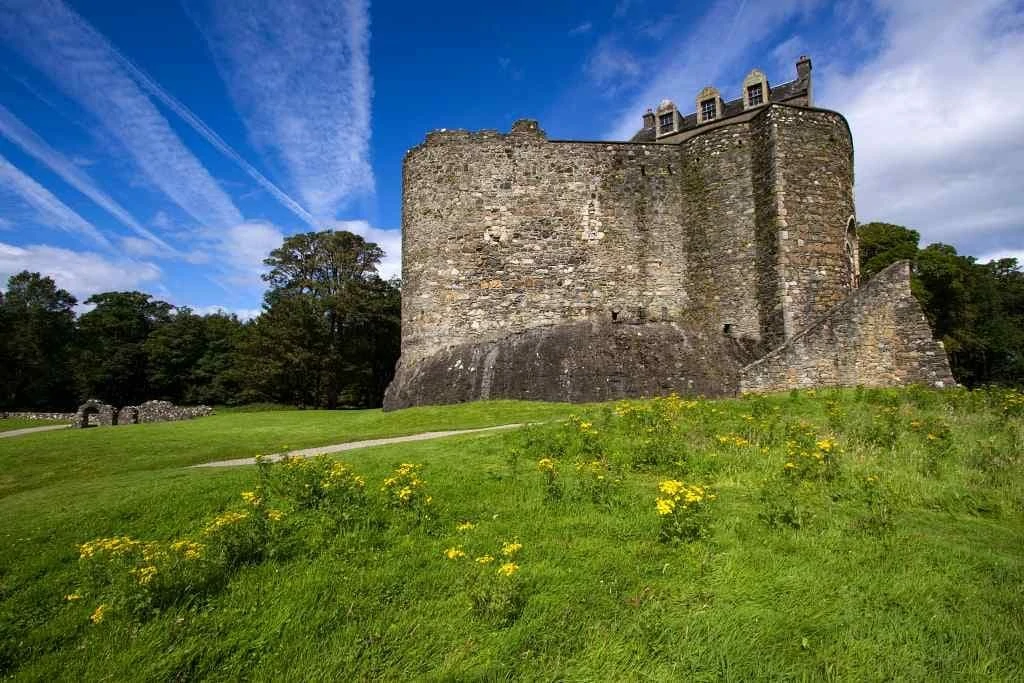
Bordered on three sides by the sea, Dunstaffnage Castle is another stronghold of the Clan MacDougall. It was built by Duncan MacDougall in the early 13th century, whose father was also known as the King of the Isles. It was built as Scotland and Norway were battling for the Hebrides, and was besieged during the wars of Independence by Robert the Bruce.
The castle remained a royal castle for 160 years after his capture and boasts one of the oldest curtain walls in Scotland. Dunstaffnage was also where Flora McDonald was held before being sent to the Tower of London for aiding Bonnie Prince Charlie’s escape.
Where: Dunbeg, Oban
When: 13th century
Style: Medieval
Open for Visit: Yes. For more information, check here.
6. Dunyvaig Castle
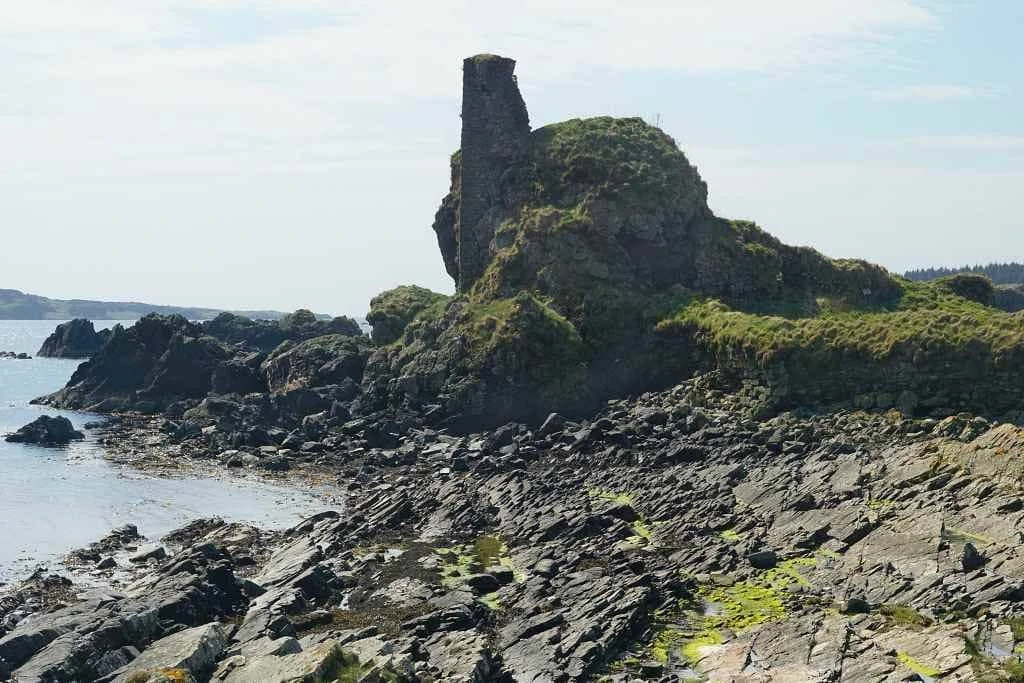
Once a Naval Fortress of the Lord of the Isles, Dunyvaig Castle is one of the most important historic sites on Islay. The remains you can see today are thought to be from the 15th and 16th centuries, but it’s possible that it was built upon a prehistoric dun or fort as early as the 12th century. The nearest town to the castle is Port Ellen on the southern coast of Islay.
Where: Lagavulin Bay, Isle of Islay
When: 15th and 16th centuries
Open for Visit: Yes. Open 24 hours
7. Glengorm Castle
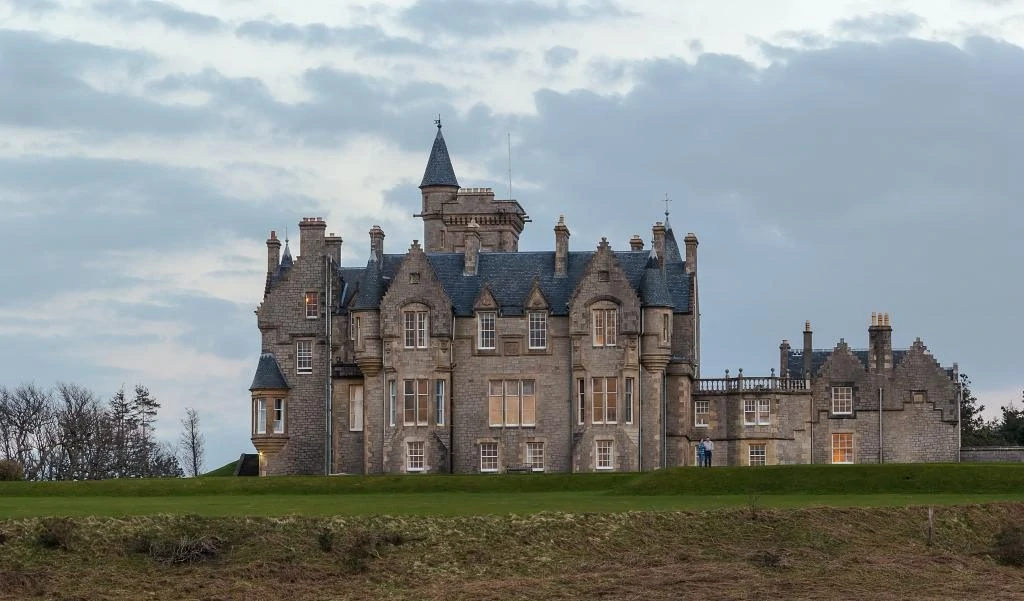
On a clear day, you can see more than 60 miles to the Hebrides from Glengorm Castle. It’s right at the northern tip of Mull near the town of Tobermory, and from its headland, you can also see forests, lochs, and hills.
The castle is newer than most on this list, having only been built in the 19th century. The country house is a family home but has also been repurposed as a hotel that offers walking tours of the local area.
Where: Tobermory, Isle of Mull
When: 19th century
Style: Country House
Open for Visit: Yes. The castle is a hotel and open to the public. Click here for more information.
8. Gylen Castle
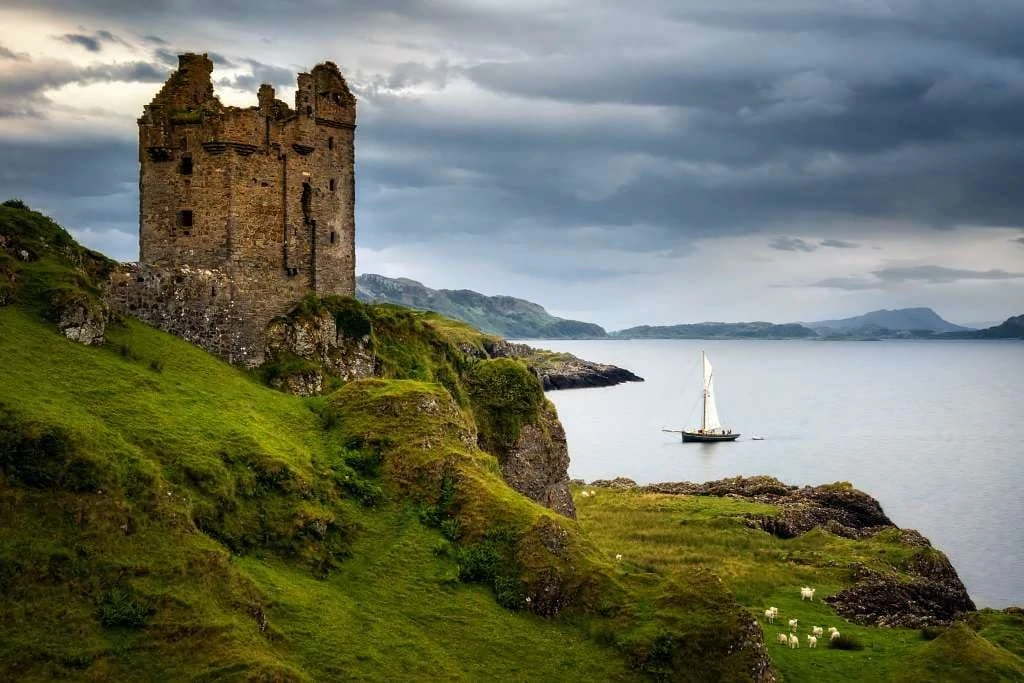
Another site belonging to the Clan MacDougall, Gylen Castle is a small tower house overlooking the Firth of Lorn. It was built in the late 16th century and was also known as the Castle of the Fountains.
It was restored in 2006 after centuries of sieges, fires, and extreme weather. There is no entrance fee. There’s also a tea garden near the castle where visitors can stop for refreshments. For those staying in Oban, it’s possible to get a ferry over to the island; then it’s a three-mile walk to the castle.
Where: Kerrera, Oban
When: 16th century
Style: Renaissance Tower House
Open for Visit: Yes. Open 24 hours
9. Inveraray Castle
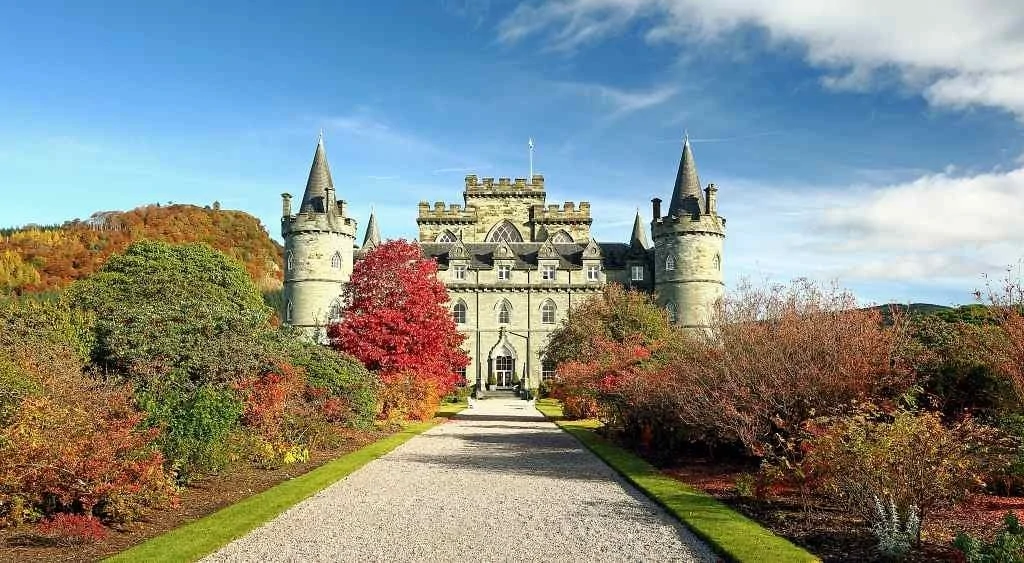
This impressive 18th-century castle is the seat of the Dukes of Argyll and is set on the shores of Loch Fyne. It’s easy to get here from Edinburgh or Glasgow and admire the magnificent Gothic Revival architecture and acres of gardens.
Part of the castle is off-limits to visitors as it’s still the residence of the Duke and their family. Inveraray Castle is thought to be haunted by the ghost of a harp player who died during the ransacking and burning of the castle in 1644. The ghost is said to be extremely well-mannered and more often appears to women.
Where: Inveraray
When: 18th century
Style: Gothic Revival, Baroque, and Palladian architecture
Open for Visit: Yes, check here for more information.
10. Kilchurn Castle
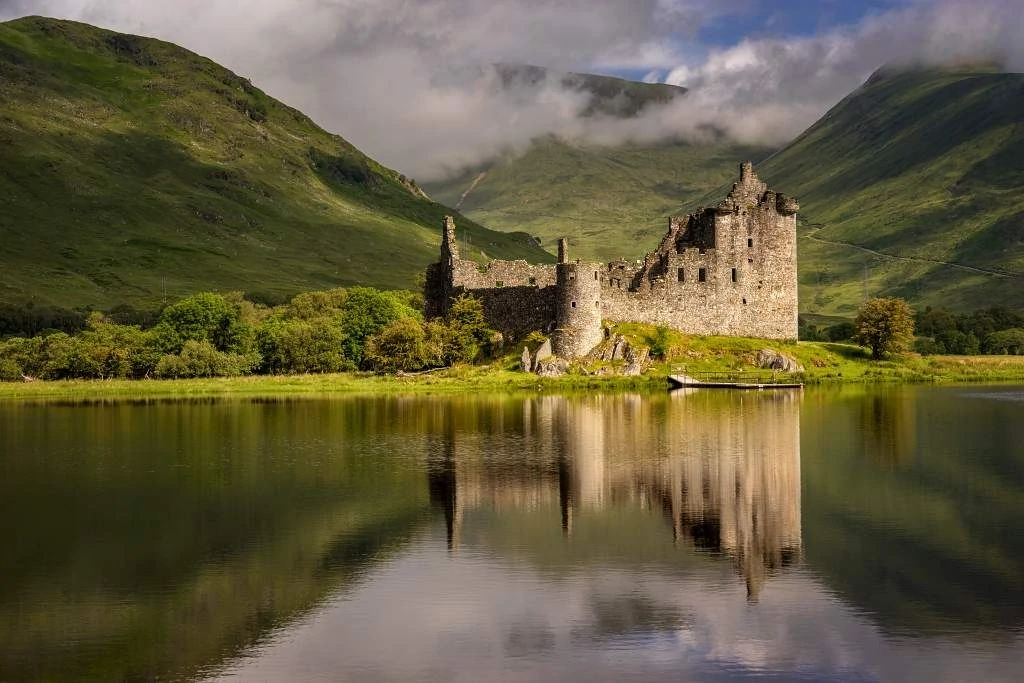
Now a ruin, the picturesque setting of Kilchurn Castle means it’s one of the most photographed sites in Scotland. It was built in the mid-15th century on the shores of Lochawe as a base for the Campbells of Glenorchy.
They occupied the castle for 150 years, and the castle was abandoned in the 1770s. If you can get to the castle (which is difficult, as there are no proper roads), you’ll be rewarded with epic views of the surrounding mountains and loch from the top.
Where: Lochawe, Dalmally
When: 15th century
Style: Medieval
Open for Visit: Yes, check here for more information.
11. Old Castle Lachlan

The ruins of Old Castle Lachlan sit on a headland on the east side of Loch Fyne, overlooking Lachlan Bay. Although a castle has been on the site since at least 1314, there is nothing left of it; these ruins date back to the more recent 15th century.
The castle fell into ruin after the Clan of Maclachhlan supported Bonnie Prince Charlie in the Jacobite Rebellion. You can visit the castle on the Lachlan Bay walking trail. You’ll also see one of just a handful of intact medieval church buildings in Western Scotland, Kilmorie Chapel.
Where: Barnacarry
When: 15th century
Style: Medieval
Open for Visit: Yes. Open 24 hours. Check here for more information.
12. Moy Castle

The ruins of Moy Castle can be found on the south coast of Mull overlooking the sea near Lochbuie. It was built in the 15th century by the first Laird of Lochbuie, Hector Reaganach MacLean, but abandoned in 1752.
Visitors can enter the structure but do so at their own risk. It’s probably better to enjoy walking in the area or swimming at the sandy beach south of the castle. Those who want to stay dry can try spotting the sea eagles that nest in the hillside overlooking the beach.
Where: Lochbuie, Isle of Mull
When: 15th century
Style: Tower Castle
Open for Visit: Yes, but the castle is not safe.
13. Rothesay Castle

The circular curtain wall built to defend against invading Norwegian fleets is unique in Scotland. Since withstanding a three-day siege by Norway’s King Haakon IV, it has been occupied by both Robert the Bruce and Cromwell’s troops.
Unfortunately, it was burned and left as a ruin in 1685 by the Duke of Argyle. Rothesay Castle is directly opposite Bute Museum, where you can see artefacts that have been found over the years in the castle.
Where: Rothesay, Isle of Bute
When: 13th century
Style: Medieval
Open for Visit: Yes. Check here for more information.
14. Skipness Castle
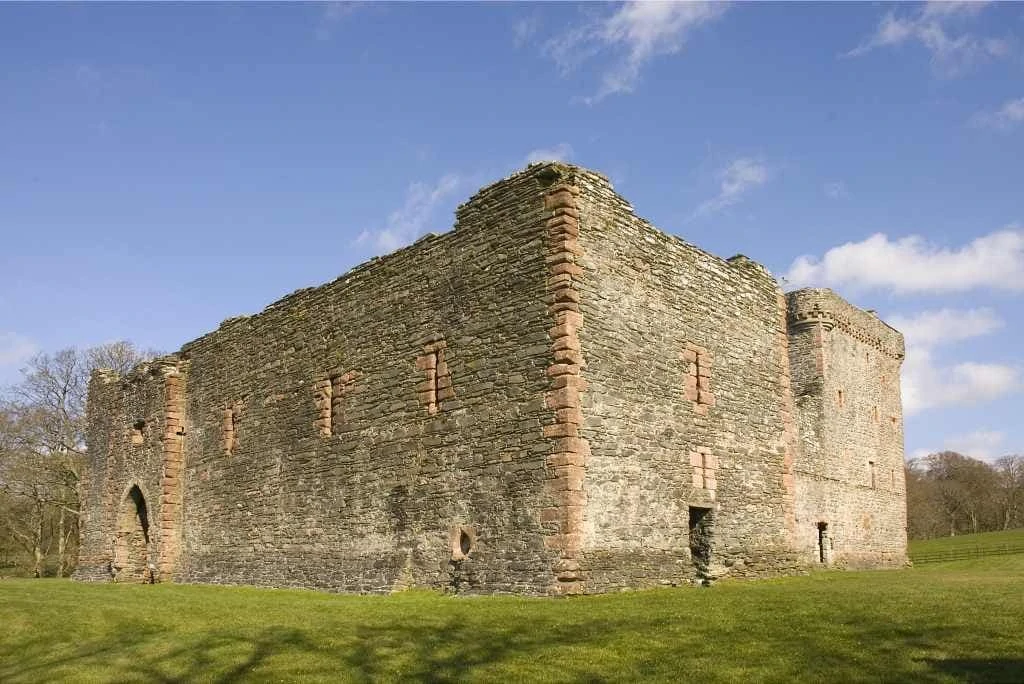
Close to the village of Skipness, this castle of the same name is on the east of the Kintyre Peninsula near Loch Fyne. The castle dates back to the early 13th century and was updated in the 14th and 16th centuries too.
As well as the castle, there’s a chapel nearby which you can also visit. Both visits are free of charge, and parking is free. You can walk inside the castle and even climb up to the roof, which offers panoramic views of the Kilbrannan Sound and the Isle of Arran on a clear day.
Where: Skipness, Tarbert
When: 13th century
Open for Visit: Yes. Check here for updated information.
15. Castle Stalker
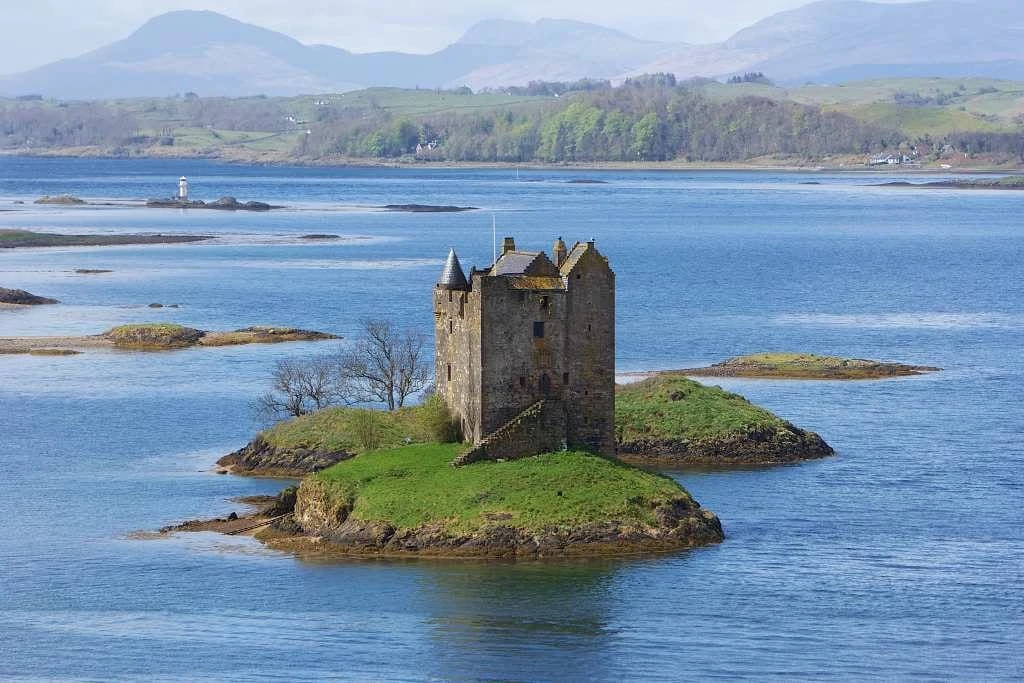
This small castle is a four-storey tower house that was the seat of the Clan MacDougall for a number of centuries. It’s in the middle of Loch Laich, making it one of the most picturesque castles in Argyll. The small castle is private property, but tours can be arranged. If you feel that the castle looks familiar, it may be that you’ve seen it in the film Monty Python and the Holy Grail.
Where: Appin
When: 14th century
Style: Baronial
Open for Visit: Only by booking. Check here for more information.
16. Castle Sween
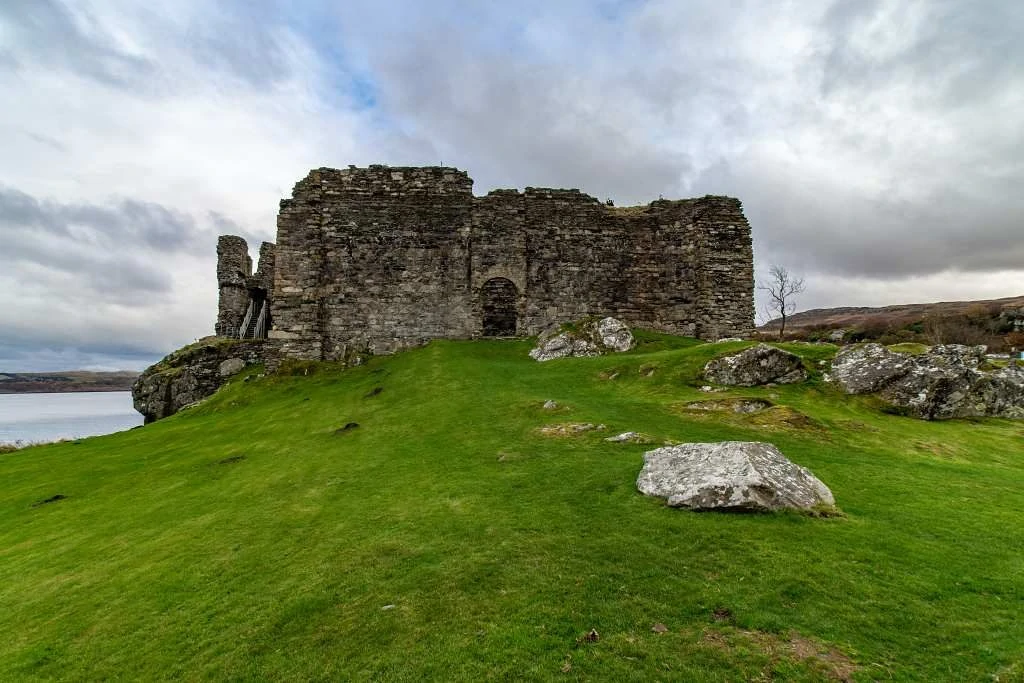
Thought to be one of the earliest stone castles in Scotland, Castle Sween is a ruin standing on the southeastern shore of Loch Sween. The Clan MacSween’s territory ranged from Loch Fyne to Loch Awe when the castle was (almost) new, but in the Wars of Independence, they lost much of this, including the castle.
In the following centuries, the castle was passed between rival clans before falling into ruin after being attacked and burned by the Irish in 1647.
Where: Lochgilphead
When: 12th century
Style: Stone fortress
Open for Visit: Yes. Open 24 hours. Check here for more information.
17. Tarbert Castle
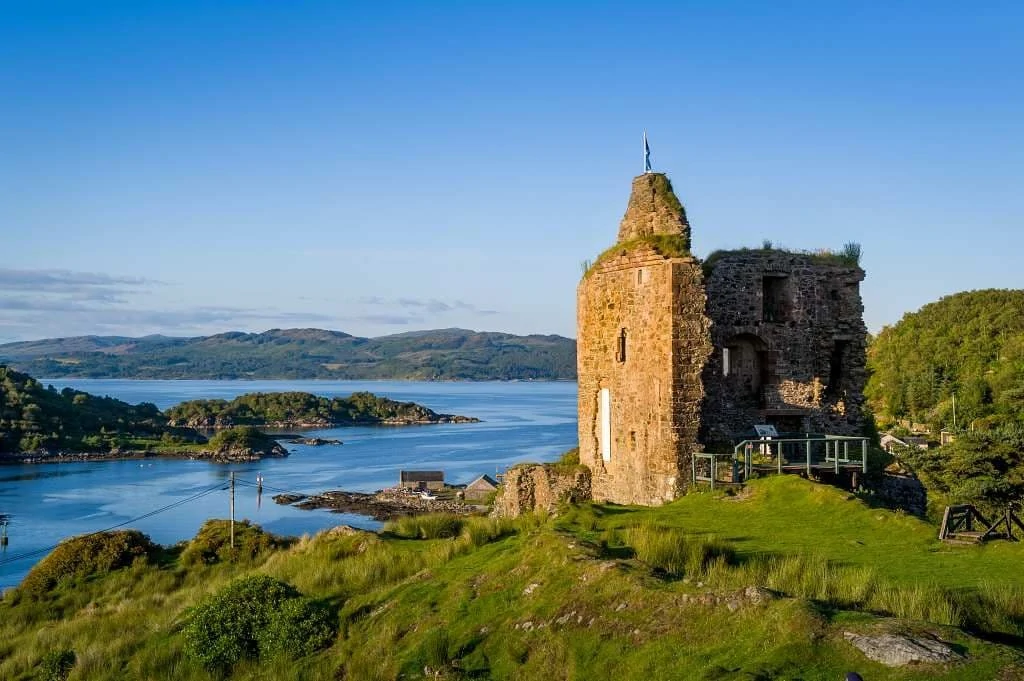
Another castle on the shores of Loch Fyne, Tarbert Castle was a royal stronghold in the middle ages, and one of three castles in the village. It is thought to date back to the 13th century before Robert the Bruce enlarged and fortified the castle in 1325. The tower was an even later addition – coinciding with the visit of James IV to Scotland’s West Coast.
From the tower, those in the castle would have been able to see threats advancing across the calm waters of Loch Fyne. The Castle Heritage Park is a picnic spot, and there are woodland and an orchard where you can walk after visiting the castle.
Where: Tarbert
When: 13th century
Style: Medieval
Open for Visit: Yes. Open 24 hours.

I enjoyed seeing the castles. It is so unfortunate that they could not be better preserved.